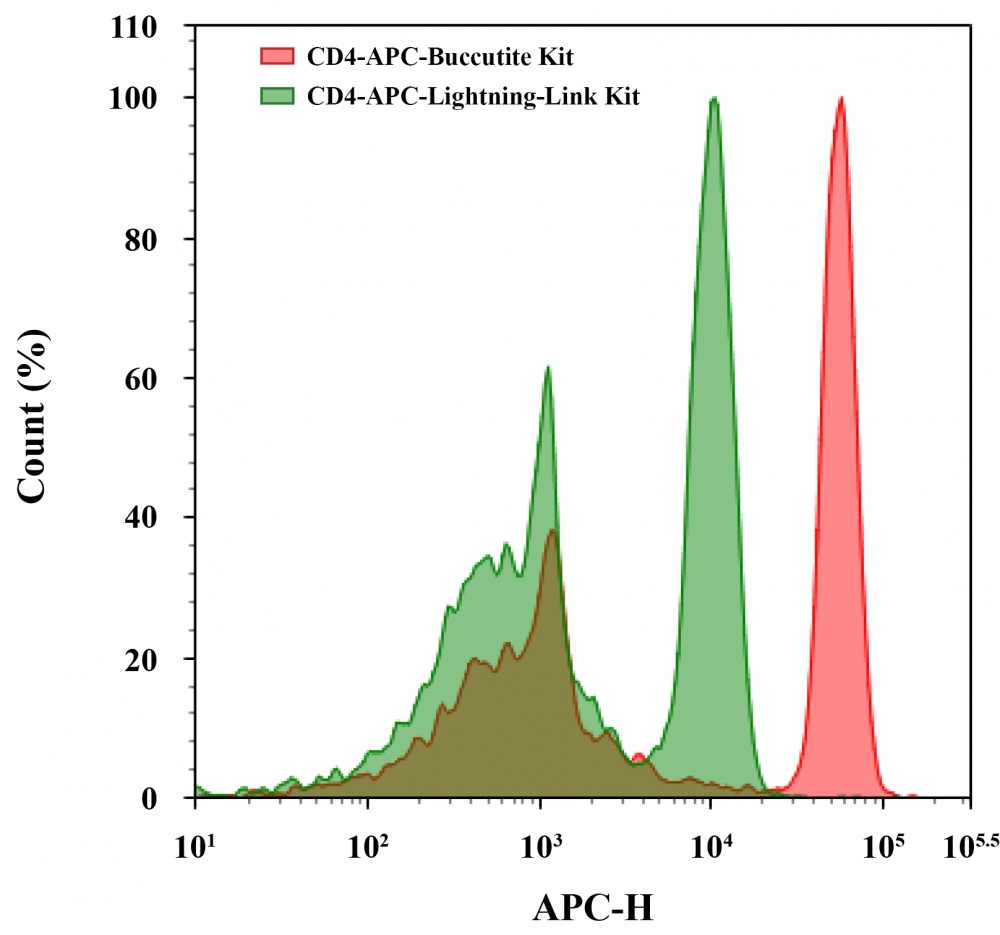Buccutite™ Rapid APC Antibody Labeling Kit
Microscale Optimized for Labeling 100 ug Antibody Per Reaction
APC is an red fluorescent protein which has an excitation wavelength of 651 nm and an emission wavelength of 662 nm. AAT Bioquest offers this Buccutite™ rapid labeling kit to facilitate the APC conjugations to antibodies and other proteins such as streptavidin and other secondary reagents. Buccutite™ APC Conjugation Kit provides a robust and convenient method to conjugate antibodies with APC. The kit includes a preactivated APC and reaction buffer. The conjugated antibody can be used in flow cytometry, WB, ELISA and IHC applications. This kit is sufficient for 2 labeling reactions, each up to 100 ug of antibody. The best ratio for any new antibody reagent must be determined by experimentation. Our kit provides preactivated APC to facilitate the APC conjugations to antibodies and other proteins such as streptavidin and other secondary reagents. Our preactivated APC is ready to conjugate, giving much higher yield than the conventionally tedious SMCC-based conjugation chemistry. In addition, our preactivated APC is conjugated to a protein via its amino group that is abundant in proteins while SMCC chemistry targets the thiol group that has to be regenerated by the reduction of antibodies.


| Catalog | Size | Price | Quantity |
|---|---|---|---|
| 1311 | 2 Labelings | Price |
Spectral properties
| Correction factor (280 nm) | 0.195 |
| Extinction coefficient (cm -1 M -1) | 730000 |
| Excitation (nm) | 651 |
| Emission (nm) | 660 |
Storage, safety and handling
| H-phrase | H303, H313, H333 |
| Hazard symbol | XN |
| Intended use | Research Use Only (RUO) |
| R-phrase | R20, R21, R22 |
| UNSPSC | 12171501 |
Documents
Contact us
| Telephone | |
| Fax | |
| sales@aatbio.com | |
| International | See distributors |
| Bulk request | Inquire |
| Custom size | Inquire |
| Technical Support | Contact us |
| Request quotation | Request |
| Purchase order | Send to sales@aatbio.com |
| Shipping | Standard overnight for United States, inquire for international |
Page updated on December 15, 2025

